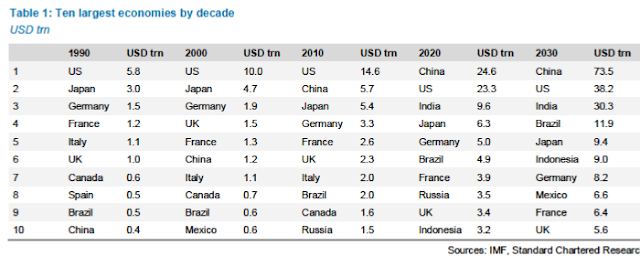vina wrote:I do hope you had reported this. The admins would have had a good laugh at it!
This is pretty standard English I assure you . Just google for it.
Teaching Grandma to suck eggs
Teaching grandma to suck eggs
Grandma to suck eggs
A big apology to you on this - I didnt know, hence misconstrued...
Must say though, whichever school you went to, taught you well the fine art of covering ignorance in bluster! That doesnt take away from the fact that I didnt know the idiom at all, sorry...
vina wrote:h. But you were the one who asked who defined "long bonds". That is the market convention in Europe as well
Not at all, whether its called "long", medium" or "short" is irrespective..Your point was a cavil over whether a fixed rate contract is possible in the markets for 5 years tenor or more..If you want to call it "medium", be my guest...(if the longest maturity bond issued by the US treasury is the only tenor that is "long", then it is a pretty narrow definition, but its not relevant)..We were not talking about 30 year contracts in any case..
Net net, there are bonds, offshore, onshore, and millions of fixed price contracts with maturity >5 years and 10 years and more..
vina wrote:Point is such markets if it shows up just 200 securities is very thin indeed. Those long term fixed contracts are very rare.
So? "Thin" market = doesnt exist? By that logic, equity markets are "thin" (given how small they are compared to Fx markets)..So equity markets dont exist?!
vina wrote:Well, HOW Exactly will they do it is the question. In the absence of such markets for the long end risk management, those contracts are usually not entered into in India . That is why
First of all, they DO exist..there is data on that..As I said, just look at one category, sub debt, and you will understand they HAVE to be there (if you know what sub debt means)...Second, you are compeltely wrong in saying that there is no IRS market in INR - there i a well developed market on INR swaps, across maturities - ever heard of MIFOR/OIS? what isnt there is a FRA onshore, but that is executed through the USDINR NDF market offshore, which is very liquid..
But all this gyaan on onshore market is irrelevant, as all commodities are hedged offshore, where there are even more developed markets for these things...
Essentially, there is no question of whether long term fixed price contracts exist or not, they DO...
vina wrote:Err. Fixed for a few years! So they are not fixed to the perpetuity of the contract! Touche. Classic definition of a variable clause! Sometimes NatGas and other contracts are entered into for 30-40 years /for the life of the asset
If it is 30-40 years, then there are price ecalation clauses after 5 or 7 yers..However, many 3-15 year contracts are fixed price..Thats the nature of the market....
Now look at all the claims you have made:
1. The price was "set" by the govt..Fact: RIL et al "asked" the govt to come and clear up the mess..
2. There cannot be "fixed price" contracts for natgas...Fact: There are existing contracts that are fixed price, including the ones that RIL reneged on...
3. There are no >5 year financial market instruments that have fixed price contracts..Fact: they are ubiquitous..
4. The above arent there "in India"..Fact: Irrelevant to a commodities disucssion, but still, they are very much present..
5. There is no IRS market in Idnia...Fact: wrong, there is..
6. Arbitrators have to be "registered"..Fact: Well, I asked you if Gurumurthy is "registered" as anything..
7. RIL signed "myriad different" contracts with GOI, not NELP..Fact: not possible in a public auction..
At the end, besides slogans, there is nothing to the analysis, given so many rank incorrect assumptions...
The policy is a mess, not because of prioritisation (most gas producing countries have or have had such prioritisation norms), not because the govt wanted "cheap" gas (cheaper the gas, less the profit petroleum to the govt)..Not because of "price setting" either - NELP had defined price setting to be an "arms length" activity...But because ministers used the opportunity of new policymaking, and gas was new then, to try and play crony games, old style...So Mukesh versus Anil, Mukesh versus everyone else, and so on...In the process, they right royally screwed it up...
